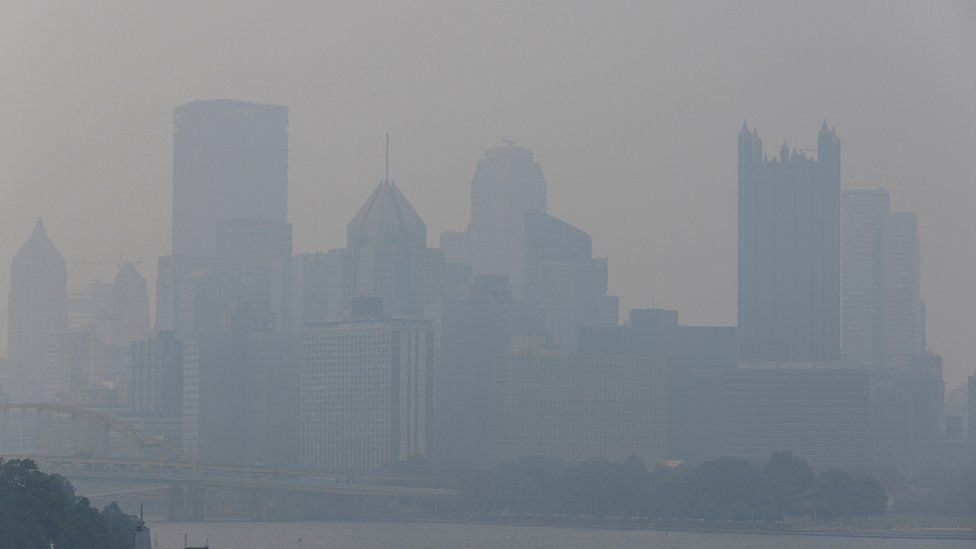ARTICLE AD BOX
 Image source, Reuters
Image source, Reuters
A smoky haze from Canadian wildfires hangs over the US Midwest, parts of the East Coast and major cities like Pittsburgh, Pennsylvania
By Chelsea Bailey & Juan Benn Jr
BBC News, Washington
Millions of people woke up again this week to hazy skies and hazardous air quality, as wildfires in Canada continue to burn out of control.
It's not the first time large areas of North America have been blanketed in wildfire smoke, and researchers say it won't be the last.
With a long wildfire season ahead, scientists are calling for more research into risks of repeat exposure to smoke.
According to scientists, what you're seeing when you peer through the smoky haze are tiny aerosol particles called PM2.5s.
While larger airborne particles, like pollen, can get trapped in your nose, scientists say PM2.5 particles are around the size of a virus and, like a virus, they can easily pass into your lungs.
"When they are breathed in, they are small enough that they can get… absorbed into your bloodstream and cause cardiovascular issues," said Brett Palm, a researcher with the National Center for Atmospheric Research.
"They essentially react with your cells and inside your body to cause stress and inflammation."
Symptoms can include difficulty breathing, coughing, headaches and fatigue. Those most likely to be affected by the smoke are people with pre-existing respiratory conditions like asthma and COPD, as well as frequent smokers.
Mr Palm said early studies show that, as wildfire smoke is flushed downwind, sunlight can alter the composition of the particles, making it more toxic.
"Wildfires are not a static thing," he said. "There are a lot of chemical reactions happening in wildfires and the composition of the smoke changes rapidly."
Research shows firefighters, who are frequently exposed to smoke, are more likely to be diagnosed with cardiovascular and respiratory diseases. In fact, studies have found cardiovascular disease to be the leading cause of death for career and volunteer firefighters.
Colleen Reid, a researcher who studies wildfires and the impact of climate change on human health, said repeated exposure to wildfire smoke can also impair brain function and, for people who are pregnant, lead to low birth weights and premature birth.
In some cases of exposure, particles have even been found in the placenta, she said.
Yohannes Tesfaigzi, a pulmonology professor at Harvard's Brigham and Women's Hospital, said even minimal exposure can cause dysfunction throughout the entire body.
"It's not only now the lungs - it's the cardiovascular system not working properly. It becomes a whole body issue."
Still, scientists say they don't yet fully understand how wildfire smoke affects the general population.
"Most of our understanding of the health impacts of wildfire smoke is looking at emergency department visits because we can get access to that data," Ms Reid said.
"We need to do more research to understand questions like: does the air pollution have to get above a certain level for us to see more [side effects?] Do we need to have a certain number of days of the air pollution to have an effect? Or can what we can say is just the higher the concentration?," she said.
The best way to limit the affects of wildfire smoke, Ms Reid said, is to limit time outdoors - including exercise - and take air quality warnings seriously.
"N95 masks are really good at protecting you, if you wear them with a tight seal," she said.
Indoors, "you can run the air conditioner on recycle so it's trying to use the inside air and cool it, rather than bringing in outside air," she said. It's also good to have a HEPA filter - a type of pleated mechanical air filter - in your home.
It's not just about learning how to protect ourselves, it's also about tackling climate change.
"It's not an 'either or', it's a 'both, and', at this point," she said.

 1 year ago
79
1 year ago
79








 English (US) ·
English (US) ·